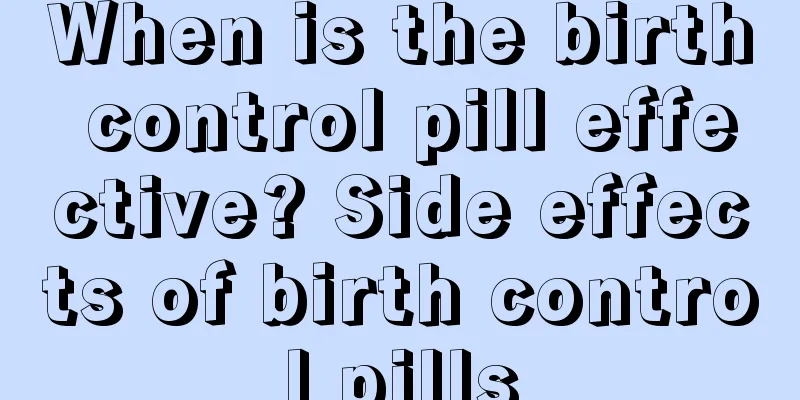What are the differences between physiological jaundice and pathological jaundice in newborns?

|
The birth of a newborn is a great happiness for the family, but the newborn is too fragile and must be taken good care of. Learn more about the health knowledge of newborns. Among them, jaundice in the neonatal period is one of the most dangerous diseases. There are certain differences between physiological jaundice and pathological jaundice in newborns, and these differences may directly affect the treatment of the baby. The difference between physiological jaundice and pathological jaundice in newbornsDifferent appearance time Physiological jaundice: Physiological jaundice in newborns mostly occurs within 2-3 days after birth and is most severe on the 4th to 5th day. Pathological jaundice: Neonatal pathological jaundice appears earlier than physiological jaundice, usually within 24 hours. Different durations Physiological jaundice: The duration of physiological jaundice in newborns is generally 7-10 days for full-term infants and 2-4 weeks for premature infants. Pathological jaundice: Neonatal pathological jaundice lasts longer, far longer than physiological jaundice. Full-term infants with more than 2 weeks of jaundice and premature infants with more than 4 weeks of jaundice all have pathological jaundice. Different reasons Physiological jaundice 1. The sudden increase in the partial oxygen pressure in the blood of the newborn causes excessive destruction of red blood cells, resulting in increased serum bilirubin and causing jaundice. 2. The liver function of newborns is immature, and the liver's ability to absorb, bind and excrete bilirubin is poor, resulting in increased serum bilirubin and causing neonatal jaundice. 3. The hepato-enteric circulation of newborns is immature, and serum bilirubin cannot be well discharged into the intestines and reabsorbed by the intestines, resulting in increased serum bilirubin and neonatal jaundice. ¥Pathological jaundice 1. Neonatal diseases: Neonatal pathological jaundice is caused by neonatal hemolytic disease, infection, hepatitis, heart disease, etc. 2. Drug-induced damage: Some drugs may cause toxic hepatitis, resulting in increased bilirubin in the serum and inability to be excreted normally, thus causing pathological jaundice in the neonate. The daily increase in bilirubin varies Physiological jaundice: The daily serum bilirubin of neonatal pathological jaundice is less than 85umol/L. Pathological jaundice: The serum bilirubin of neonatal pathological jaundice increases by more than 85umol/L every day. Different hazards Physiological jaundice: Physiological jaundice in newborns will disappear on its own after a period of time and will not cause any harm. Pathological jaundice: Pathological jaundice in newborns reaching a certain level can damage brain cells, cause cerebral palsy, or even the death of the baby. Different treatments [Physiological jaundice] Neonatal physiological jaundice does not require special treatment. Pay attention to replenishing water and calories, and it will disappear on its own after a period of time. [Pathological jaundice] 1. Etiological treatment: If neonatal pathological jaundice is caused by disease or other reasons, then find out the specific cause of the disease, treat the disease in a targeted manner to eliminate the cause, and the jaundice will naturally fade away after the cause is eliminated. 2. Drug treatment: If necessary, some corresponding anti-jaundice drugs can be used under the guidance of a doctor to treat pathological jaundice in order to achieve the purpose of eliminating jaundice. 3. Traditional Chinese Medicine Treatment: You can also choose traditional Chinese medicine for treatment. Specifically, you can focus on clearing away heat and detoxifying, promoting dampness and relieving jaundice. Under the guidance of a traditional Chinese medicine doctor, choose Chinese medicine for treatment. 4. Phototherapy: Phototherapy can be used once jaundice occurs. You can go to a regular hospital with relevant equipment for phototherapy. When treating neonatal jaundice, side effects such as fever and diarrhea may occur, which can recover on their own after stopping phototherapy. Different after treatment Physiological jaundice: Physiological jaundice in newborns can heal on its own without treatment and will not recur after recovery. Pathological jaundice: Neonatal pathological jaundice may improve and then worsen after treatment. It may also relapse after recovery, which is very troublesome. |
<<: Why do babies get constipated after drinking milk powder?
>>: Does a baby's late speech mean low IQ? How to judge whether a baby is late in speaking
Recommend
How often should you use Crest whitening teeth strips? How to use Crest whitening teeth strips?
If the teeth are yellow, then the image of the pe...
How to judge whether your baby has heat stroke? How to prevent heat stroke in summer?
Summer is a time when heat stroke is more common,...
How long does it take for a child's cough to heal? What tests should be done for a child's cough?
Most children have a weak constitution, so coughi...
Is it normal to lose hair after giving birth? How much hair loss is normal after giving birth?
After giving birth, many mothers experience hair ...
9 tips to coax your baby to sleep and taboos to coax your baby to sleep
It is not difficult to coax a baby to sleep, but ...
How long is the appropriate time for a baby to swim? How long is the appropriate time for a baby to swim at a time?
Baby swimming has become a popular sport in recen...
What should elderly pregnant women pay attention to in their diet? What should elderly pregnant women eat?
Pregnancy for older mothers is very hard and requ...
Is Xie Na pregnant with twins? Is Xie Na pregnant with twins?
Xie Na just announced her pregnancy on Weibo. So ...
What is a baby comforter? Why do babies need comforters?
I wonder if you mothers have noticed that babies ...
How much is a barrel of Feihe milk powder? Which series of Feihe milk powder is the best?
Milk powder is a product that we are all familiar...
Is it good to drink Shenghua Tang after childbirth? The effect of drinking Shenghua Tang after childbirth
During the postpartum confinement period, because...
How about Zhenshiming Little Yellow Duck Eyewash? Is Zhenshiming Little Yellow Duck Eyewash safe?
Recently, I see that many people are using Zhensh...
What is the problem with the baby spitting up milk repeatedly? What should I do if the baby always spits up milk?
Breast milk contains rich nutrients, and breastfe...
Should I stop feeding my baby if he is constipated? Should I stop feeding my baby if he does not poop?
The stomach and intestines of babies are very fra...
How to treat children's ADHD? How much does it cost to treat children's ADHD?
Usually, ADHD is a very common phenomenon in chil...









